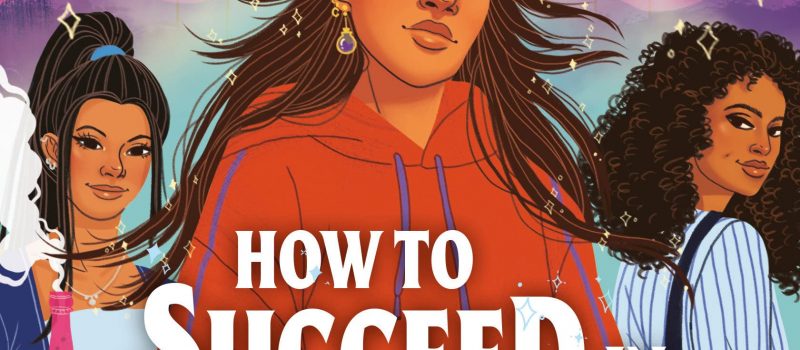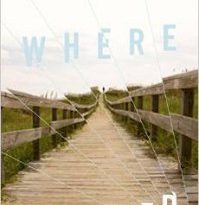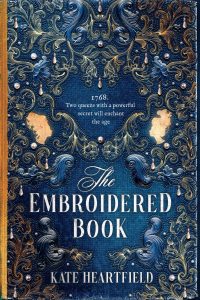Alex Brown Reviews How to Succeed in Witchcraft by Aislinn Brophy
 How to Succeed in Witchcraft, Aislinn Brophy (G.P. Putnam’s Sons 978-0-59335-452-0, $18.99, 416pp, hc) September 2022.
How to Succeed in Witchcraft, Aislinn Brophy (G.P. Putnam’s Sons 978-0-59335-452-0, $18.99, 416pp, hc) September 2022.
Shayna is a junior at the prestigious T.K. Anderson Magical Magnet School in Aislinn Brophy’s debut novel, How to Succeed in Witchcraft. For years she’s been neck and neck with Ana Álvarez, her academic nemesis, but this time she’s determined to come out on top. The Brockton Scholarship is her ticket to a top magical licensing college, which will guarantee her a high-paying job in a respected field. To get it, she not only has to beat out Ana with her magical scores and grades, but please Mr. B., the drama teacher and heir to the Brockton fortune.
Forced to join the school’s production of the Latinx-ified Jane Austen play ‘‘Bronxtown Brooms’’, Shay finds herself in Mr. B.’s increasingly uncomfortable spotlight. The only thing that makes the play bearable is the shift in her relationship with Ana, beautiful, funny, oh-so-kissable Ana. The more Mr. B. insinuates himself into Shay’s life, the harder it gets for her to justify doing whatever it takes to get ahead. Is the future her parents want for her worth having to put up with his attentions? Are their dreams something she even wants at all?
None of the marketing, from what I’ve seen, has made anything of the Pride and Prejudice influence on How to Succeed in Witchcraft, but it felt to me like a pretty solid retelling. Jane Austen’s classic comedy of manners is one of my favorite novels of all time. I’ll consume just about any adaptation of her work, regardless of quality, but I keep an extra special lookout for BIPOC and/or queer retellings. How to Succeed in Witchcraft has a Pride and Prejudice-related subplot – the play the kids are putting on is basically a cross between In the Heights and Ibi Zoboi’s Pride – but the main story also parallels nicely. In this case, Shay is Darcy, Ana is Lizzie, Lex is Charlotte, Mr. B is Mr. Collis and Mr. Wickham, Shay’s mom is Mrs. Bennett and Lady Catherine, Shay’s dad is Mr. Bennett, Ed and Mikey are Kitty and Mary, and Brittany is a triple blend of Caroline, Lydia, and Georgiana.
Pride and Prejudice is often treated as a romance first and foremost, but the romance is more of a subplot than the main driver of the narrative. The book is really about power dynamics. Austen focuses her gaze on class and the patriarchy, as does Brophy, with the additional intersections of race and queerness. Ana’s experiences as a lower-middle-class bisexual Latina are vastly different from Shay’s experience as a biracial Black and white lower-middle-class lesbian, from Lex’s experience as a Filipina adoptee with wealthy white parents, and from Brittany’s experience as a thin and conventionally attractive rich white girl with divorced and disinterested parents. In some areas, Shay has privilege over Ana, while in others Shay is disenfranchised as Brittany reaps the benefits.
Mr. B. holds power over Shay not just because he’s a rich adult man and she’s a financially unstable teenage girl but also because the Brockton scholarship will open doors that have been intentionally locked to keep people like her out. Like most things in America, we can pretend it’s just class holding Shay back, but racism is at the root of that financial disparity. It always, always comes down to racism. The past several scholarship winners have all been white, and Mr. B. spends an inordinate amount of time with them before and after they win. Shay’s mom knows how difficult it is to be an unlicensed woman in a world dominated by magic and the patriarchy, and how much worse it gets when you’re a queer Black woman. She pushes her daughter so hard because the doors that were locked for her are cracked open for Shay. She’s of a generation that is willing to sacrifice everything to secure a safe place, but Shay is young enough to see those sacrifices as giving up her sense of self and choosing assimilation over activism.
I work at a predominately white independent school and attended them for my entire academic career, so a lot of what Shay goes through is painfully familiar. The novel paints a good picture of what it’s like to be Black at a predominantly white institution, the negotiations you’re constantly making, the way you feel like you have to sell out some key part of yourself in order to get ahead. How to keep what makes you you while also learning how to move in their world. You have to figure out how to play their game by manipulating their rules to benefit you, and you have to do it all mostly alone, a teenager against an entire system. Sometimes there will be Black adults like me looking out for those kids and giving them a safe space where they don’t have to code switch, but we’re few and far between and are dealing with the same systemic problems as our kids.
Many adaptations skip over or minimize the creepiness of Wickham seducing two teenage girls, one to get her fortune and the other for the apparent fun of destroying the prospects of an entire family, but Brophy doesn’t. Media tends to frame grooming as dramatic and obvious, but too often it’s like what Wickham and Mr. B. do. Both men keep their victims off-balance and dependent by showering them with attention and then yanking it away at every slight. They use their power and privileges to puff themselves up into something bigger and better than they truly are, and use it to build trust with their victims. Their crimes are slight at first, gaslighting and microaggressions, thereby easy for their victims to ignore and hard for outsiders to notice. As Shay learns, even in a #MeToo world, we’re all still stuck in a system built to protect men like Mr. B.
The novel tackles all of these intense topics well, never pushing the point too hard, while also not letting it get lost in the humor and romance. It’s a great adaptation that has enough to say to stand on its own. How to Succeed in Witchcraft is a fantastic debut. Aislinn Brophy is a talented writer with a knack for layers and subtlety. Her worldbuilding is exquisitely detailed and well thought out. The plot marvelously blends fantasy with real-world events. I honestly can’t think of a single thing I’d change. If they keep this up, they’ll have a long, successful career.
Alex Brown is a queer Black librarian and writer. They have written two books on the history of Napa County, California’s marginalized communities. They write about adult and young adult science fiction, fantasy, and horror as well as BIPOC history and librarianship. Diversity, equity, inclusion, and access set the foundation of all their work. Alex lives in Southern California with their pet rats and ever-increasing piles of books.









